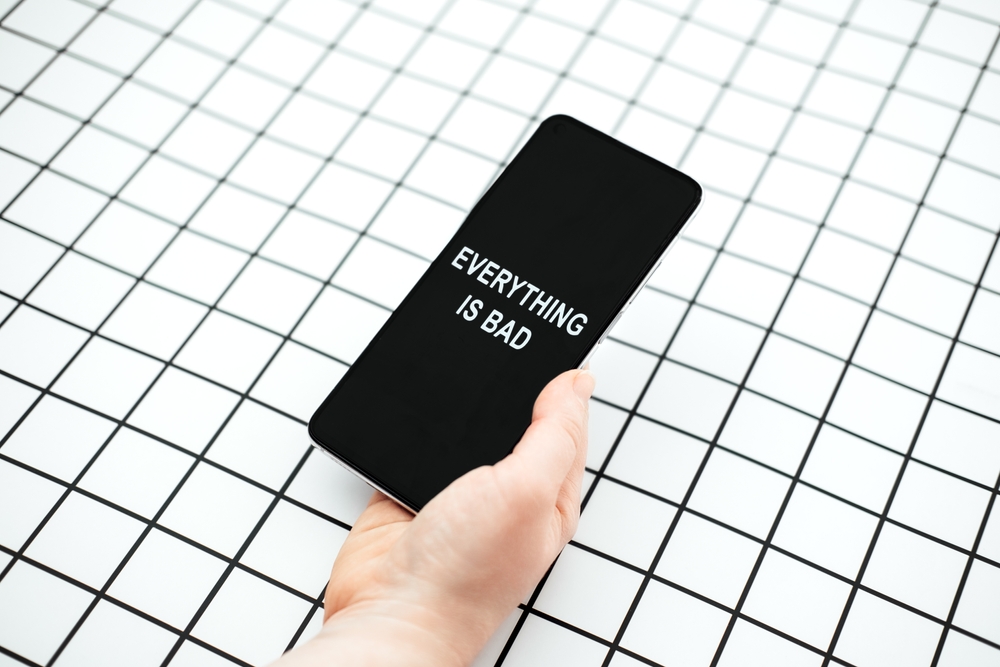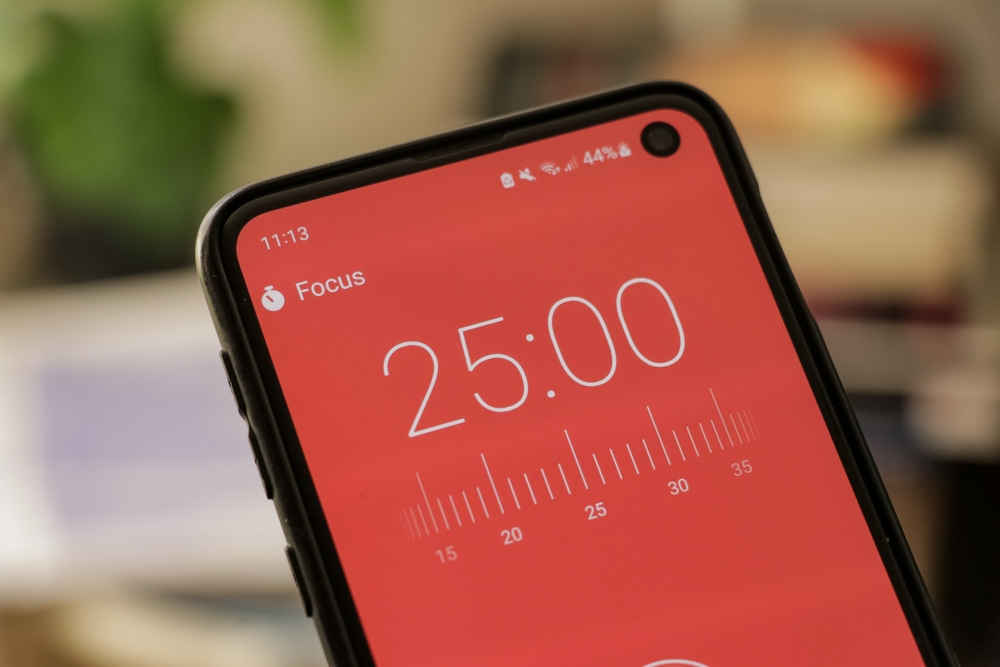Read this to learn about doomscrolling in children, why it is bad for your child, how you can tell if this is an issue, and what can be done about it to help.
Doomscrolling can be damaging for anyone, but doomscrolling in children can have worse consequences due to a child’s inexperience with not only the internet, but life as well. For many children, consuming negative online content can have an immediate effect on mental well-being and the brain, and this can manifest in anxiety, outbursts, and behaviours that they do not typically show.
What is Doomscrolling, and Why is it a Problem for Kids?

Doomscrolling refers to when a person spends a lot of their time watching/listening/reading negative news online. Some people may feel like they need to do this, and they can’t tear themselves away from the behaviour, or they tell themselves that they are doing it ‘just to stay informed’.
However, doomscrolling can become a habit that can make you feel stuck in a cycle of negativity, increase anxiety, worsen symptoms of depression, and more. Doomscrolling in children can be difficult to deal with, but it is crucial to step in.
What Are the Signs That Your Child May be Caught in a Doomscrolling Loop?

Signs that your child might be caught in a doomscrolling loop could include a low mood, signs of depression, increased screen time, agitation or anxiety when using their devices, discussing worrying topics, and more.
It is important to note that every child is different, and you need to know their baseline in order to make an assumption. This is why it is crucial that you make sure that you understand your children and know what is normal for them and what is not.
Some signs that your child might be doomscrolling include:
- Low mood
- Signs of depression
- Increased screen time
- More agitated or anxious when using their device
- Discussing topics that are not suitable for their age
How Does Doomscrolling Affect a Child’s Brain and Emotions?
Doomscrolling in children can negatively impact emotions and lead to decreased empathy due to the consistent news and information regarding violence and tragedies occurring in the world. It can also lead to a reduction in critical thinking skills due to the fact that information is surface-level and does not allow time for deep or critical thinking thanks to a bombardment of constant new information.
It can also negatively impact communication skills due to decreased engagement with the people and things around them, while also fostering anxiety and a negative mindset.
Why Are Children More Vulnerable to Negative Online Content?
Children are more vulnerable to negative online content for a number of reasons—they have less experience to help them overcome troubles and know what is wrong or wrong/safe or dangerous, etc. Online content can also be more harmful for children, as children copy behaviours they see, often without realising the potential risks of doing so.
However, it is also crucial to note that not all online content may immediately be flagged as being negative for many. For example, celebrity or influencer content on social media might be harmless at first, but can lead to problems with self-esteem and self-image, with more and more children feeling like they need to attain unrealistic standards, leading them to believe that they are not good enough. For some children, ‘doomscrolling’ can look completely different, but it can still lead to anxiety, worry, and other long-term issues that parents and guardians need to be aware of.
Is There a Link Between Doomscrolling and Anxiety, Focus, or Sleep Issues?
Research has shown that there is a link between doomscrolling and anxiety, which can then also impact focus and sleep issues. Doomscrolling can reinforce catastrophising thinking and make anxiety worse due to consistently receiving bad news from all over, and this will take a toll.
What Are Some Practical Ways to Stop a Doomscrolling Habit?

If you are asking yourself, “How can I help my child stop doomscrolling?” you can take comfort in knowing that there are many different things that can help. While doomscrolling in children can be difficult to get control of, it is crucial that you put measures in place to help your child overcome this issue.
Depending on the age of the child and the severity of doomscrolling, you may need to put different measures in place to help. If you have a very young child, then it may be necessary to take additional steps like changing parent/child safety settings or taking the phone away at night. However, if your child is old enough, teaching them to be mindful of how they feel when scrolling and teaching them about localising phone-checking can be incredibly helpful, as this will also tackle any long-term scrolling.
Be Mindful of How You Feel When Scrolling
You will become more stressed and depressed when you are constantly taking in negative news, so you need to be mindful or when you start to reach this point and take action. If you start to feel anxious, put your phone away or seek out good news or something more relaxing.
Teaching children this is crucial, as this will help with long-term phone use and help them learn to take care of themselves at all times.
Some signs to look out for might include:
- Stiff neck
- Tense shoulders
- Stinging eyes
- Feelings of dread
- Feelings of anxiety
- Feelings of sadness
- Racing heart
- Fast breathing
Localise Your Phone-Checking and Doomscrolling Behaviour
Localising a behaviour means that you limit doing that behaviour at set places or times (or both) to limit it and take back control. Decide how and where you will get your news, and stick to it so that your mind can focus.
You can teach your child to localise phone-checking behaviour by setting aside time when they can check their devices, such as after lunch. Avoid localising these behaviours to when you just wake up or when you are going to bed, as this can result in difficulty focusing and other negative issues.
You can download apps that block access to social media for a set period of time as well. For example, Freedom, AppBlock, StayFocused, and more can help you and your child to limit screen time by blocking access to certain apps or even turning the internet access off for a set duration.
To localise doomscrolling behaviour, you could:
- Put your phone in another room or away from your desk
- Set time limits for scrolling (this can be a daily limit, hourly limit, whatever works for you)
- Carefully curate your feeds to avoid excessive amounts of bad news (this is easily done on apps like TikTok)
Healthy Digital Habits Are Crucial in Today’s World
Forming healthy habits in today’s world of social media can be difficult, but there are key things that you should try to do, and teach your child to do, too.
Three things that you can do to train your brain for healthier digital habits include:
- Slow down your scrolling – take a breath, and slow down. Limit the number of times you scroll, and read things in-depth rather than skim reading to slow down
- Set boundaries for yourself – set timers, and allow yourself to go without doomscrolling or even being on your phone at certain locations like restaurants, dinnertime, or wherever else makes sense for you
- Prioritise the real-life things around you – make sure you prioritise the people and things around you, and remind yourself that you live in the real world – not online.
How the Brain Workshop Can Help Rewire Digital Habits

Doomscrolling in children is harmful if left unchecked, and can result in anxiety, worsened depression symptoms, and more. Worried your child is stuck in a doomscrolling loop? The Brain Workshop offers neuroscience-led strategies to help your children regain focus, confidence, and emotional balance.
If you would like to learn more or get tested for ADHD, please don’t hesitate to contact us, learn more about us at the Brain Workshop, meet our team, check out events, or even read our FAQ.






